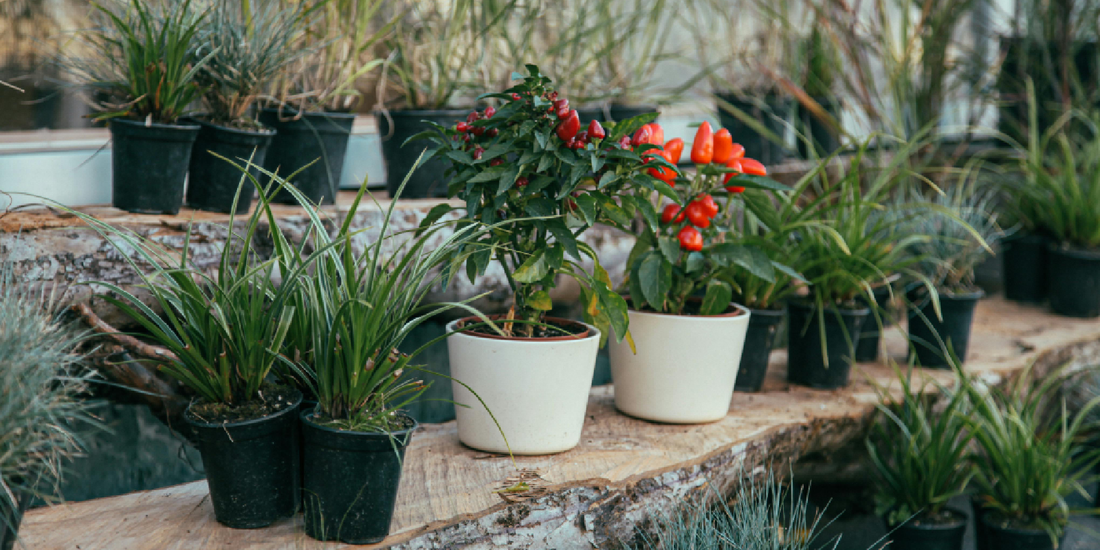
How to Boost Growth Using Grow Lights and Humidity
Share
When it comes to indoor gardening, light and water often steal the spotlight. Yet, there’s another powerful growth factor hiding in plain sight: humidity. Along with proper lighting—especially from efficient LED grow lights—humidity control can dramatically improve plant health, accelerate growth, and help you achieve lush greenery indoors.
In this guide, we’ll break down how to use grow lights and humidity together for maximum plant performance, plus how tools like the amoyls VerdantGlow S-Shaped 8-Tier Plant Shelf with Grow Lights can make it all easier.
1. Why Light and Humidity Matter for Plant Growth
Plants are living, breathing organisms that respond to environmental cues. Outdoors, they benefit from natural sunlight and the fluctuating humidity of the atmosphere. Indoors, we need to recreate these natural conditions.
- Light powers photosynthesis, the process by which plants create energy.
- Humidity controls how quickly plants lose moisture through transpiration.
When both are balanced, plants can absorb nutrients efficiently, grow stronger stems, produce vibrant foliage, and bloom more frequently.
2. Understanding the Role of Grow Lights
Grow lights—especially modern full-spectrum LEDs—mimic the wavelengths of sunlight that plants need most. They’re essential for indoor gardening because windows often fail to provide enough consistent light year-round.
2.1 Benefits of LED Grow Lights
- Full-spectrum coverage for both vegetative and flowering growth
- Low heat output to prevent leaf burn
- Energy efficiency for long-term cost savings
- Compact design for space-conscious setups
The amoyls VerdantGlow shelf integrates LED grow lights into every tier, ensuring plants at all levels receive equal, consistent lighting—something window light can’t achieve.
3. Understanding the Role of Humidity
Humidity is the amount of moisture in the air, measured as relative humidity (RH). Plants lose water through tiny pores called stomata. When humidity is too low, plants lose water faster than roots can replace it—leading to crispy leaves, stunted growth, and poor flowering.
3.1 Ideal Humidity Ranges for Indoor Plants
- Seedlings → 65–75% RH
- Tropical foliage plants → 60–70% RH
- Flowering & fruiting plants → 50–60% RH
- Succulents & cacti → 30–40% RH
4. How Light and Humidity Work Together
Light and humidity have a direct relationship in plant growth. Higher light intensity speeds up photosynthesis, but it also increases transpiration (water loss). If humidity is too low, the plant can’t keep up with the water demand, leading to stress.
By matching humidity levels to your lighting intensity, you create an environment where plants can thrive without overworking their root systems.
5. Practical Steps to Boost Growth Using Both Factors
5.1 Step 1 – Choose the Right Grow Light
Select full-spectrum LED lights with adjustable brightness. This lets you tailor intensity for different plant stages. The amoyls VerdantGlow S-Shaped 8-Tier Plant Shelf with Grow Lights eliminates guesswork—its built-in LEDs are optimized for indoor growth.
5.2 Step 2 – Control Light Duration
- Seedlings & leafy greens: 14–18 hours of light per day
- Flowering plants: 12–14 hours of light per day
- Succulents: 10–12 hours of light per day
A timer ensures plants get consistent light without the risk of overexposure.
5.3 Step 3 – Maintain Ideal Humidity
You can raise humidity by:
- Using a humidifier near plants
- Grouping plants together to create a microclimate
- Placing water trays or pebble trays near heat sources
- Choosing plant stands with integrated lighting that prevents excessive drying
5.4 Step 4 – Monitor with Tools
Invest in a digital hygrometer to track both temperature and RH. Aim to keep your readings consistent—sudden fluctuations can shock plants.
5.5 Step 5 – Adjust for Seasonal Changes
Winter heating systems often dry out indoor air, dropping humidity levels below 30%. In summer, air conditioning can also reduce humidity. Counteract this by:
- Running a humidifier in winter
- Reducing fan speed to prevent excessive moisture loss
- Positioning plants away from vents
6. Troubleshooting Common Problems
|
Problem |
Possible Cause |
Solution |
|
Brown leaf tips |
Low humidity |
Increase RH with a humidifier or pebble tray |
|
Wilting despite moist soil |
Low humidity + high light |
Lower light intensity or raise RH |
|
Mold or mildew |
Too high humidity |
Improve airflow with a small fan |
|
Stunted growth |
Light too weak or humidity too low |
Increase light output and RH |
7. Why Integrated Systems Work Best
Instead of juggling separate lighting rigs and humidity devices, integrated solutions save time and space. The amoyls VerdantGlow S-Shaped 8-Tier Plant Shelf is designed with:
- Built-in LED grow lights on each tier
- Vertical shelving to create a humid microclimate naturally
- A stylish design that fits seamlessly into living rooms, kitchens, or offices
This approach keeps conditions more stable and reduces the number of separate devices you need to manage.
8. Advanced Tip – Pairing Lights and Humidity for Growth Stages
- Germination & seedlings: High humidity + moderate light to prevent drying
- Vegetative growth: Medium humidity + high light for strong stems and leaves
- Flowering & fruiting: Slightly lower humidity + high light to prevent fungal issues
Matching these conditions to your plant’s stage will maximize growth rates and yield.
9. The Bigger Picture – Creating a Balanced Environment
Light and humidity are only two parts of the indoor gardening equation. For truly exceptional plant health, also consider:
- Soil quality
- Nutrient balance
- Airflow
- Temperature stability
By fine-tuning all of these factors, you can create an indoor garden that rivals outdoor growing—without being limited by climate or season.
10. Final Thoughts
Mastering the balance between grow lights and humidity is a game-changer for indoor gardeners. By providing the right light spectrum and maintaining ideal moisture in the air, you’ll see stronger, faster, and healthier plant growth year-round.
Whether you’re nurturing tropical houseplants, starting vegetables from seed, or cultivating rare blooms, integrating these elements—especially with tools like the amoyls VerdantGlow S-Shaped 8-Tier Plant Shelf with Grow Lights—will help you grow with confidence.
